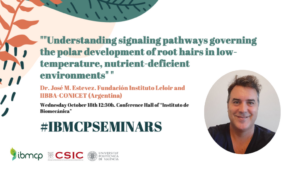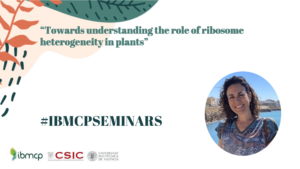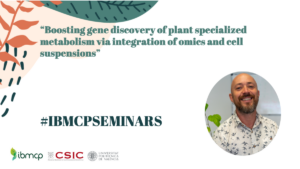Dr José M. Estevez
1Fundación Instituto Leloir and IIBBA-CONICET. Av. Patricias Argentinas 435, Buenos Aires C1405BWE, Argentina
2 ANID – Millennium Nucleus for the DeveIopment of Super Adaptable Plants (MN-SAP) and Millennium Institute for Integrative Biology (iBio), Santiago 8331150, Chile. Centro de Biotecnología Vegetal (CBV), Facultad de Ciencias de la Vida, Universidad Andrés Bello, Santiago 8370146, Chile
“Understanding signaling pathways governing the polar development of root hairs in low-temperature, nutrient-deficient environments”
Plants exposed to freezing and above-freezing low temperatures must employ a variety of strategies to minimize fitness loss. There is a considerable knowledge gap regarding how mild low temperatures (around 10 C) affect plant growth and developmental processes, even though the majority of the molecular mechanisms that plants use to adapt to extremely low temperatures are well understood. Root hairs (RH) have become a useful model system for studying how plants regulate their growth in response to both cell-intrinsic cues and environmental inputs. Here, in this talk I’ll focus on recent advances in the molecular mechanisms underpinning Arabidopsis thaliana RH growth at mild low temperatures and how these discoveries may influence our understanding of nutrient sensing mechanisms by the roots. I will explore the molecular basis of this strong RH growth response involving a cell surface receptor-like kinase named FERONIA, cell wall PEROXIDASES, downstream components of the TORC1 pathway and a complex regulation of the gene expression. Although nutrient availability in the soil is one of the key factors for a sustained plant growth, the molecular mechanisms behind the perception and the downstream signaling pathway in the roots are still far to be clear.
Some recent publications:
1. Martínez Pacheco J. et al. 2023. New Phytologist. doi: 10.1111/nph.18723.
2. Martínez Pacheco J et al. 2022. Nature Communications. doi.org/10.1038/s41467-022-
3. Moison M et al. 2021. Mol Plant. doi.org/10.1016/j.molp.2021.
4. Zhu S*, Estevez JM* et al. 2020. Mol Plant. doi.org/10.1016/j.molp.2019.
1. Martínez Pacheco J. et al. 2023. New Phytologist. doi: 10.1111/nph.18723.
2. Martínez Pacheco J et al. 2022. Nature Communications. doi.org/10.1038/s41467-022-
3. Moison M et al. 2021. Mol Plant. doi.org/10.1016/j.molp.2021.
4. Zhu S*, Estevez JM* et al. 2020. Mol Plant. doi.org/10.1016/j.molp.2019.
If anyone is interested in meeting with the speaker, please contact Miguel Blázquez






